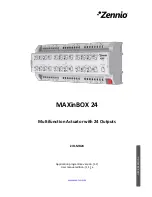Autobaud feature: If UART1 is used to connect to the flashloader, then the UART1_RX
pin must be kept high and not left floating during the detection phase in order to comply
with the autobaud detection algorithm. After the flashloader detects the ping packet
(0x5A 0xA6) on UART1_RX, the flashloader firmware executes the autobaud sequence.
If the baudrate is successfully detected, then the flashloader will send a ping packet
response [(0x5A 0xA7), protocol version (4 bytes), protocol version options (2 bytes) and
crc16 (2 bytes)] at the detected baudrate. The Kinetis Flashloader then enters a loop,
waiting for flashloader commands via the UART peripheral.
NOTE
The data bytes of ping packet must be sent continuously (with
no delay between bytes) in a fixed UART transmission mode
(8-bit data, no parity bit and 1 stop bit). If the bytes of the ping
packet are sent one-by-one with some delay between them, the
autobaud detection algorithm may calculate an incorrect baud
rate. In this case, the autobaud detection state machine should
be reset.
Supported baud rates: The baud rate is closely related to the MCU core and system
clock frequencies. Typical baud rates supported are 9600, 19200, 38400, and 57600.
Packet transfer: After autobaud detection succeeds, flashloader communications can
take place over the UART peripheral. The following flow charts show:
• How the host detects an ACK from the target
• How the host detects a ping response from the target
• How the host detects a command response from the target
Chapter 13 Kinetis Flashloader
K22F Sub-Family Reference Manual , Rev. 3, 7/2014
Freescale Semiconductor, Inc.
319


















